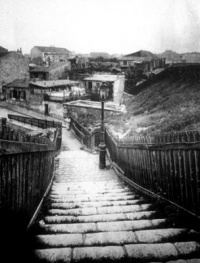City
From The Art and Popular Culture Encyclopedia
|
"I have to admit that the Passage was an unbelievable pesthole. It was made to kill you off, slowly but surely, what with the little mongrels' urine, the shit, the sputum, the leaky gas pipes. The stink was worse than the inside of a prison." --Death on Credit (1936) by Louis-Ferdinand Céline tr. Ralph Manheim "Fex urbis lex orbis"--Les Misérables (1862) by Victor Hugo Here's a little thing that's gonna please ya --"Bangkok" (1978) by Alex Chilton |


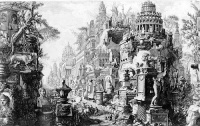
If this wiki were a city, it would feature prominently nightclubs, record stores, a red light districts, museums, libraries, second hand book stores and comic shops.
|
Related e |
|
Featured: |
An urban area is an area with an increased density of human-created structures in comparison to the areas surrounding it. Urban areas may be cities, towns or conurbations, but the term is not commonly extended to rural settlements such as villages and hamlets.
Urban areas are created and further developed by the process of urbanization. Measuring the extent of an urban area helps in analyzing population density and urban sprawl, and in determining urban and rural populations (Cubillas 2007).
Unlike an urban area, a metropolitan area includes not only the urban area, but also satellite cities plus intervening rural land that is socio-economically connected to the urban core city, typically by employment ties through commuting, with the urban core city being the primary labor market. In fact, urbanized areas agglomerate and grow as the core population/economic activity center within a larger metropolitan area or envelope.
Metropolitan areas tend to be defined using counties or county sized political units as building blocks. Counties tend to be stable political boundaries; economists prefer to work with economic and social statistics based on metropolitan areas. Urbanized areas are a more relevant statistic for determining per capita land usage and densities (Dumlao & Felizmenio 1976).
Contents |
Towns
A town is a human settlement larger than a village but smaller than a city. The size definition for what constitutes a "town" varies considerably in different parts of the world.
See also
- Commuter town
- Company town
- Developed environments
- Ghost town
- Location (geography)
- Megalopolis (city type)
- Town Hall
- Town limits
- Town privileges
- Town square
Birth of cities
A city is an urban settlement with a particularly important status which differentiates it from a town.
For Paul Virilio, the transition from feudalism to capitalism was driven not primarily by the politics of wealth and production techniques but by the mechanics of war. Virilio argues that the traditional feudal fortified city disappeared because of the increasing sophistication of weapons and possibilities for warfare. For Virilio, the concept of siege warfare became rather a war of movement. In Speed and Politics, he argues that 'history progresses at the speed of its weapons systems'.
See also
Urbanization
Urbanization is the physical growth of urban areas as a result of rural migration and even suburban concentration into cities, particularly the very largest ones. The United Nations projected that half of the world's population would live in urban areas at the end of 2008. By 2050 it is predicted that 64.1% and 85.9% of the developing and developed world respectively will be urbanised.
Urbanization is closely linked to modernisation, industrialisation, and the sociological process of rationalisation. Urbanisation can describe a specific condition at a set time, i.e. the proportion of total population or area in cities or towns, or the term can describe the increase of this proportion over time. So the term urbanisation can represent the level of urban relative to overall population, or it can represent the rate at which the urban proportion is increasing.
Urbanization is not merely a modern phenomenon, but a rapid and historic transformation of human social roots on a global scale, whereby predominantly village culture is being rapidly replaced by predominantly urban culture. The last major change in settlement patterns was the accumulation of hunter-gatherers into villages many thousand years ago. Village culture is characterised by common bloodlines, intimate relationships, and communal behavior whereas urban culture is characterised by distant bloodlines, unfamiliar relations, and competitive behavior. This unprecedented movement of people is forecast to continue and intensify in the next few decades, mushrooming cities to sizes incomprehensible only a century ago. Indeed, today, in Asia the urban agglomerations of Dhaka, Karachi, Mumbai, Delhi, Manila, Seoul and Beijing are each already home to over 20 million people, while the Pearl River Delta, Shanghai-Suzhou and Tokyo are forecast to approach or exceed 40 million people each within the coming decade. Outside Asia, Mexico City, Sao Paulo, New York City, Lagos and Cairo are fast approaching or home to over 20 million people already.
See also
- Back to the land
- City-state
- Division of labour
- Heterosociality
- Megalopolis (city type)
- Conurbation
- Suburban sprawl
- White flight
- Urban morphology
- Political demography
Contributors to urbanisation:
Historical:
See also
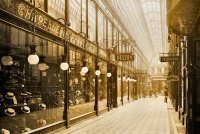
.JPG)
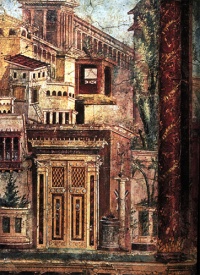
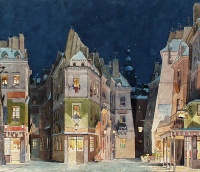
.jpg)
